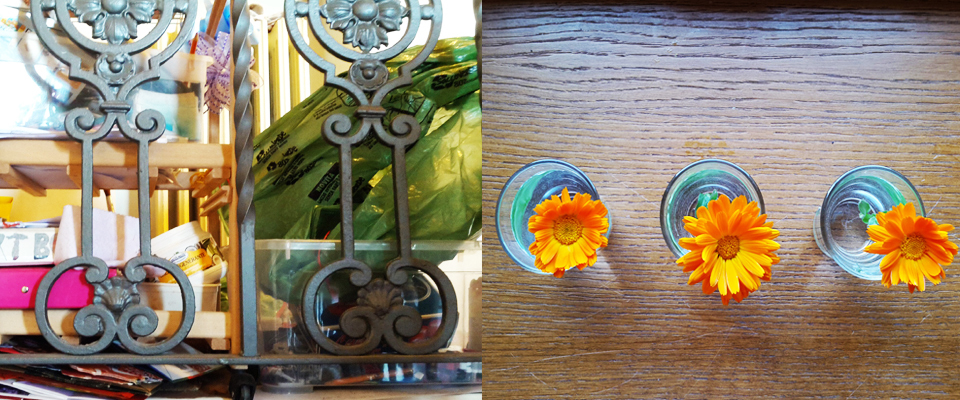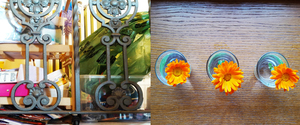
UNSCHOOLING – A MESSY AND BOISTEROUS WAY OF LIVING

I like order. I like planning, arranging and having things just so and in their place. This way I can feel more in control, more able to measure outcomes and anticipate events. I should say that only a part of me is like that, as other parts of me resist it. Somehow, as soon as it is all ordered I feel something has lessened. Something vital. Something that is trying to get out. Like a trapped breath. Eventually it does. We have to breathe, as breath is life. And as order forms and is imposed in the unschooling household, so the breath of freedom from order, or rather the energy of free flowing transformation, builds until it pushes against the order and takes a breath.
The well planned lesson is an ordered device, often devoid of breath. When children rebel against this order, it is a sign that something else is being sought. And this something will be found in the energy of the random and unspecific.
It is this constant relationship between order and flexibility and randomness that can give me trouble and sometimes plagues me. As I said, I like order. I am a grown up. But I like only as much as I need as an adult to function. My work area is neither obsessively tidy and neat, nor is it a mess. It can get messy. I organise my own work schedule but abandon it when required. And that is usually when I feel stuck, creatively disconnected or just bored. But the levels of order I like are not what can be imposed on the family as a whole, which is where I run into trouble. And especially when it comes to the children. They seem to be experimenting. Or rather, learning. They gravitate from unspeakable disorder to well, a bit or order. They like neatness for a short while and then they abandon it as they breathe out. Leaving socks and shirts and pretty much any other piece of clothing on the floor, the stairs or in the car is an ongoing experiment in cause and effect. If you leave all your clothes scattered on the floor, you will find that getting dressed in the clothes of your choice can be a frustrating challenge when you can’t find your favourite skirt.
I see that this apparent to-ing and fro-ing between the free and specific form are ways of creating different experiences and environments. As they are created and experienced, so some understanding of the pros and cons of the two points on this order to disorder continuum are revealed. Order has much to offer. It allows for cognitive, sequential brain function, the completion of complex tasks that require a series of events leading to an outcome.
Think Lego model. You need a fair bit of order for that to look like the end result on the box. On the other hand, my son often sees that he can play around with the order after he has established it a little first. So he will start making the Lego model according to the directions and then step off into the unknown by combining the pieces in a way that suits and entertains him. Abandoning the rules in favour of the unknown form that reveals itself.
So, I am not talking about specifically learning a subject such as the rules of written language or disciplines like chemistry. Order helps considerably in pursuing those topics, but only in so far as is necessary to step off the beaten track and experiment. The principle of this tension between the form and the formless, the ordered direction and the unknown path seem, as far as I am observing it, to be universal. Learning is learning and the way it takes place is applicable across all contexts.
I am learning too that my desire for order can be only met in my own space. In the wider community of the family I have to yield to the necessary impetus and vitality of order and disorder being learnt about and carry on tripping up over clothes and all sorts of things on the floor.
Should adults be teaching or showing children what order is? I would say yes. But that teaching or showing ought not be done (and I am so guilty on this one ) through frustration at the mess. It is best shown through example (I also realise that this is not always my strongest point either ) rather than yelling at everyone to clear up. (which I have done ). It’s an ongoing community process. We talk at our family meetings about stuff that needs doing, about how we like to live and through that come up with who is doing what and when. A plan. Then we have a go at the plan and pretty quickly see that it will be abandoned in favour of the experience of not having the plan. On scrutiny it seems complex. And in a way it is, because it is a plan being made by both adults and children. And the needs are both adult and age and development relevant for the kids. But persistence with this flowing and flexible process is everything, despite my adult wish that we have a plan and everyone stick to it.
It is this ebb and flow between form, structure and the formless and structure-less that informs so much of what is described as the creative process. Too much of either seems to yield the opposite. Compete free form and absence of structure does not yield much creativity. On the other end of the continuum, making everything about structure to the point that there is not room or opportunity for the random, unexpected, surprising also yields little creativity.
Much of our own adult feelings and behaviour are influenced by how we experienced the world when we were growing up. And this influence can cause tension when we seek to find new paths. When we wish to overturn old paradigms of behaviour there always seems to be the discomfort of having to grapple with our previously conditioned selves.
Session expired
Please log in again. The login page will open in a new tab. After logging in you can close it and return to this page.

This sounds like you were in my head. lol
We are not alone! Yes it is so great to realise that we share some much.